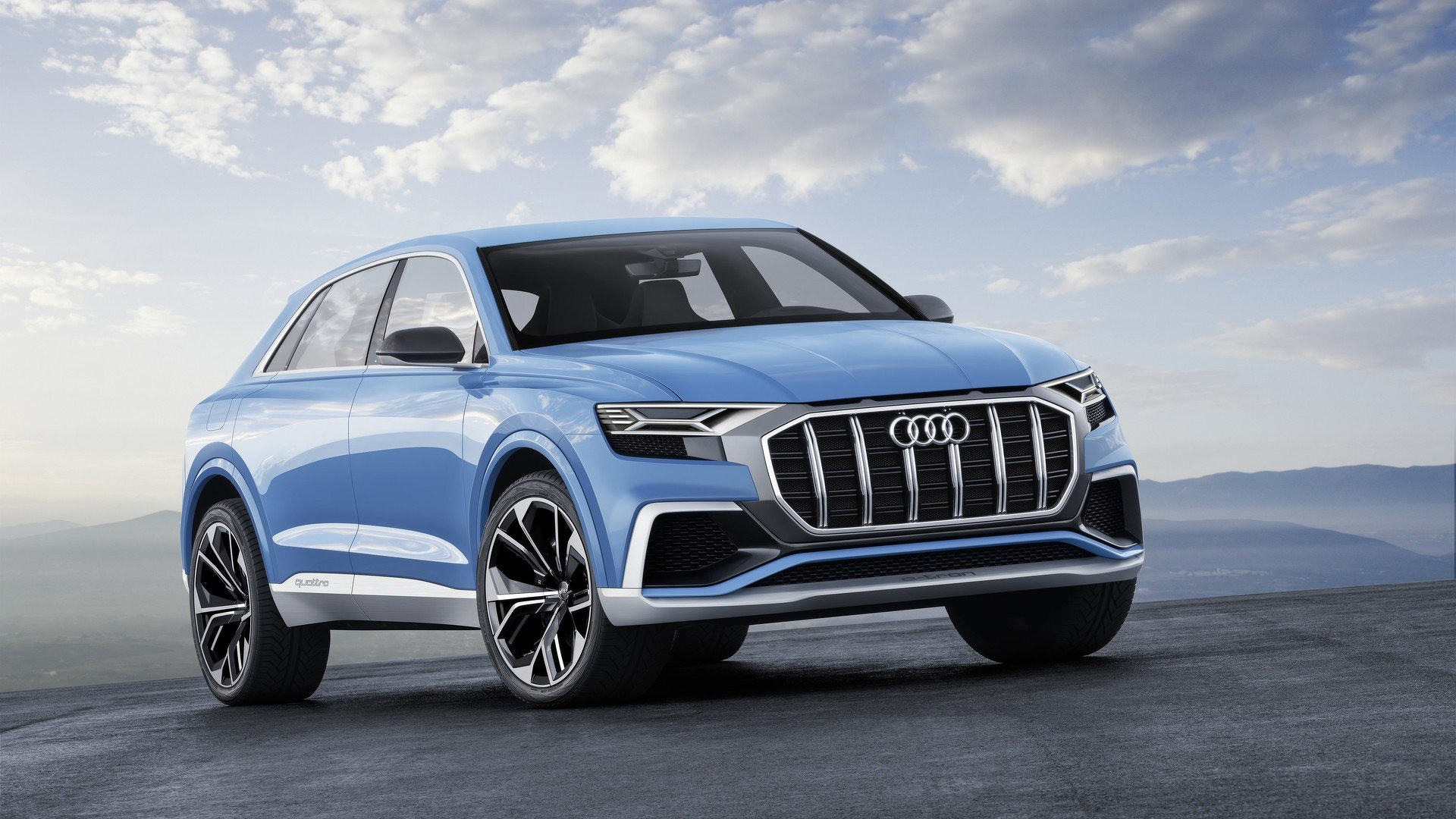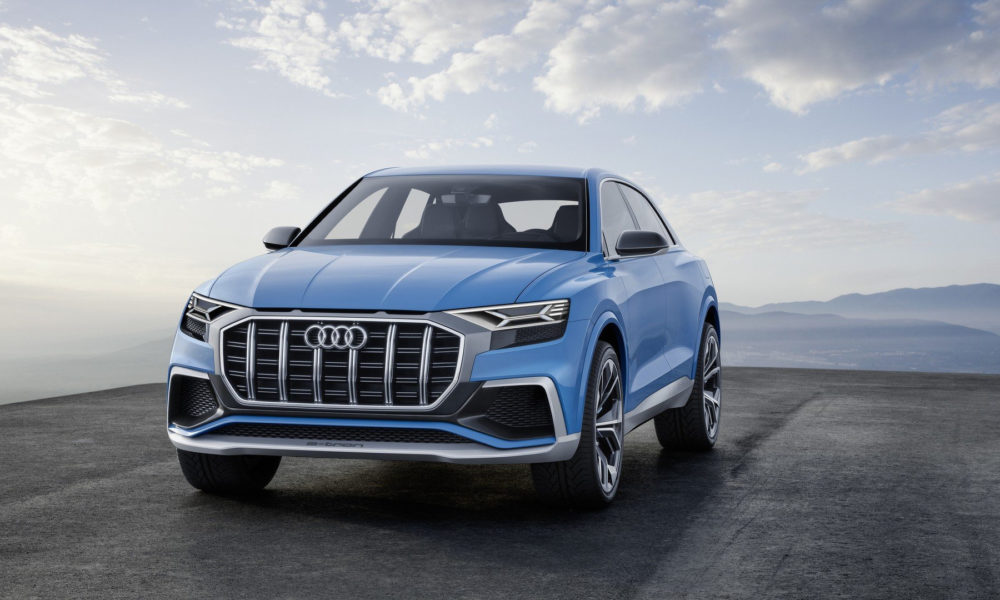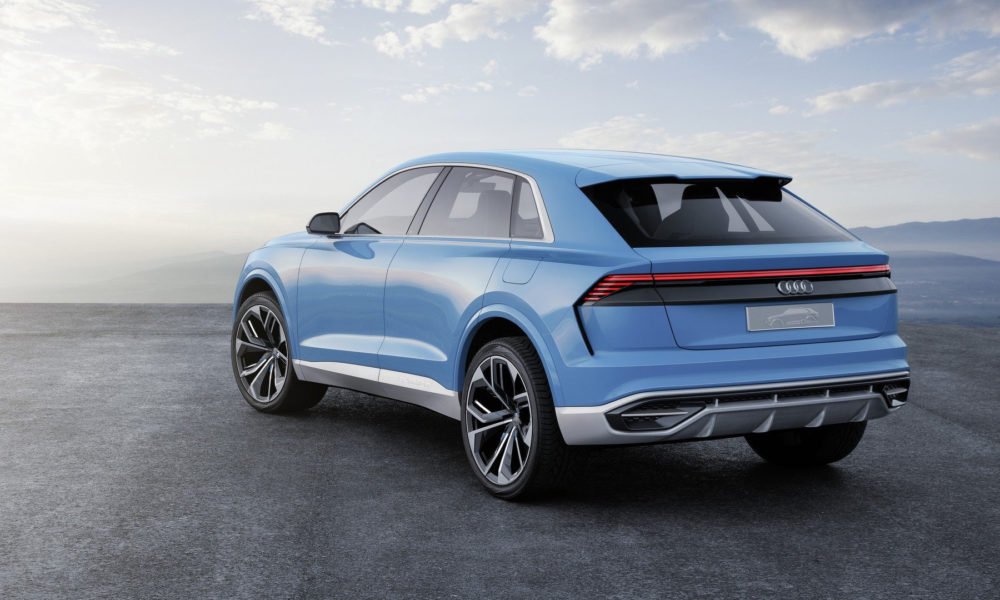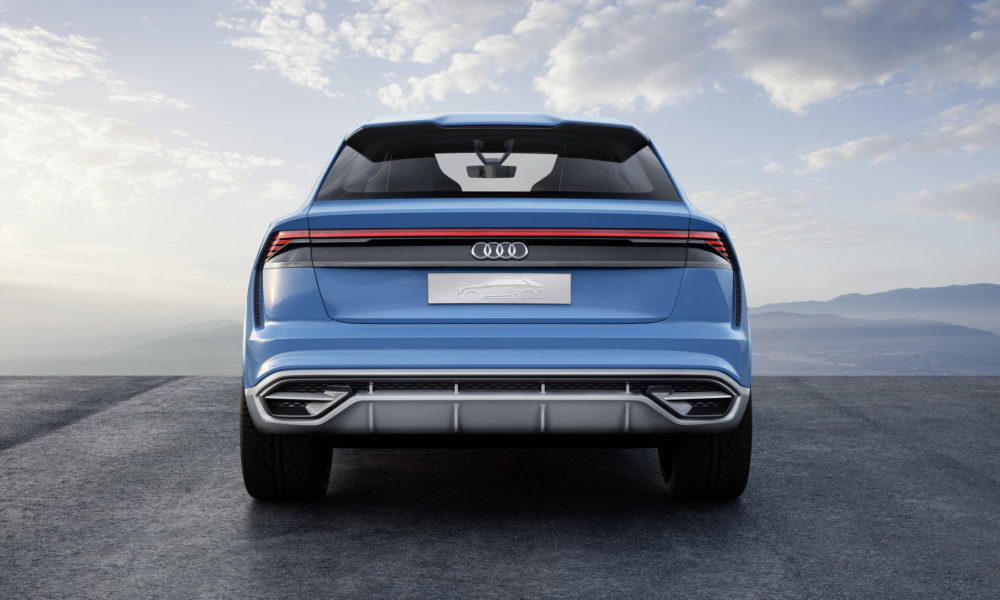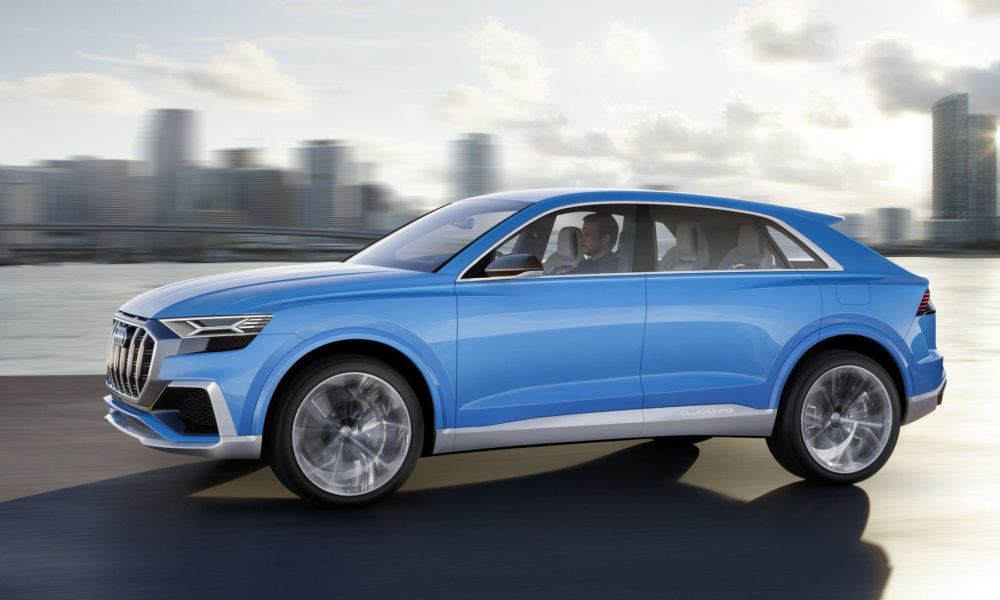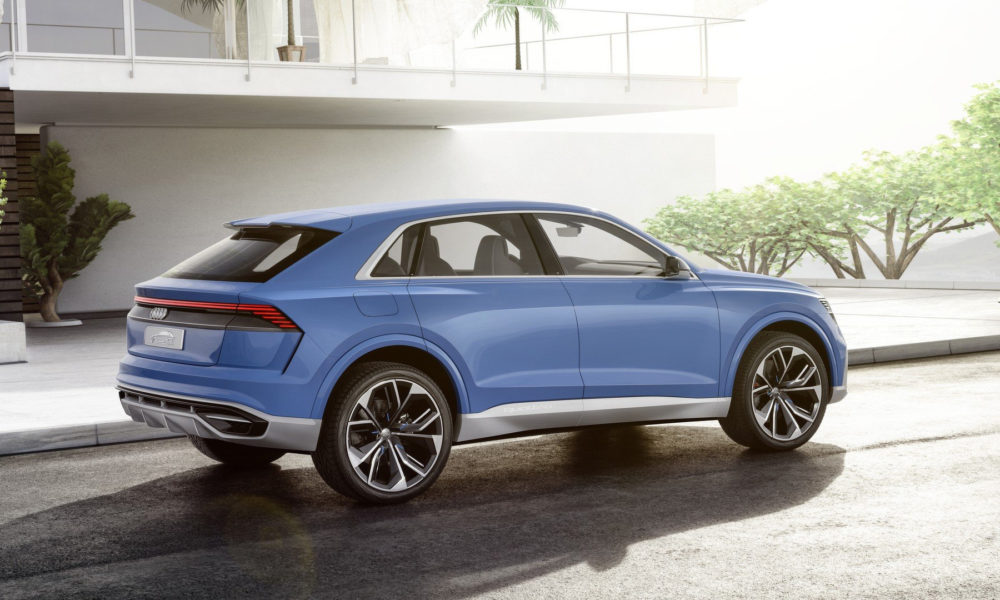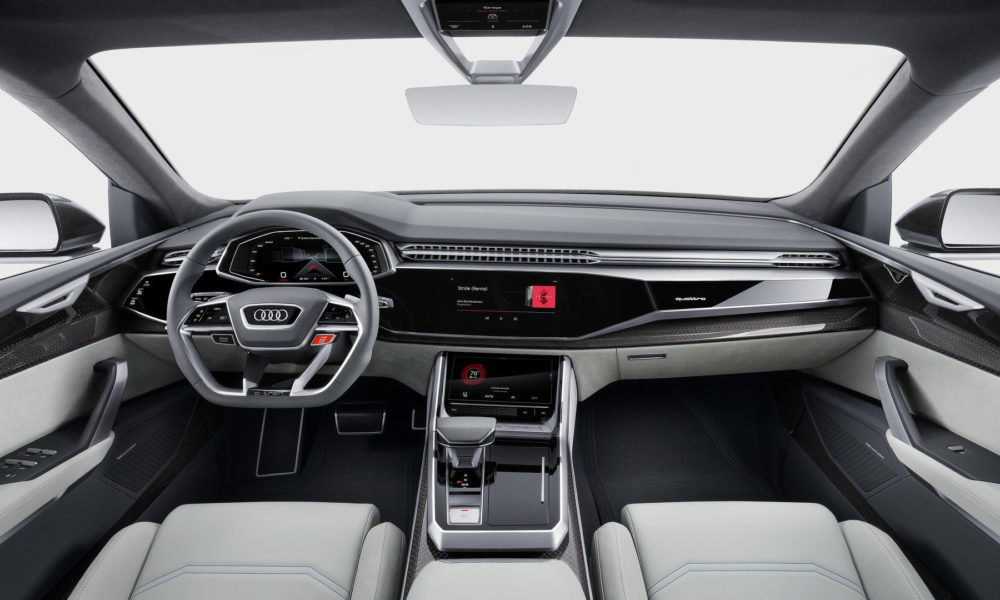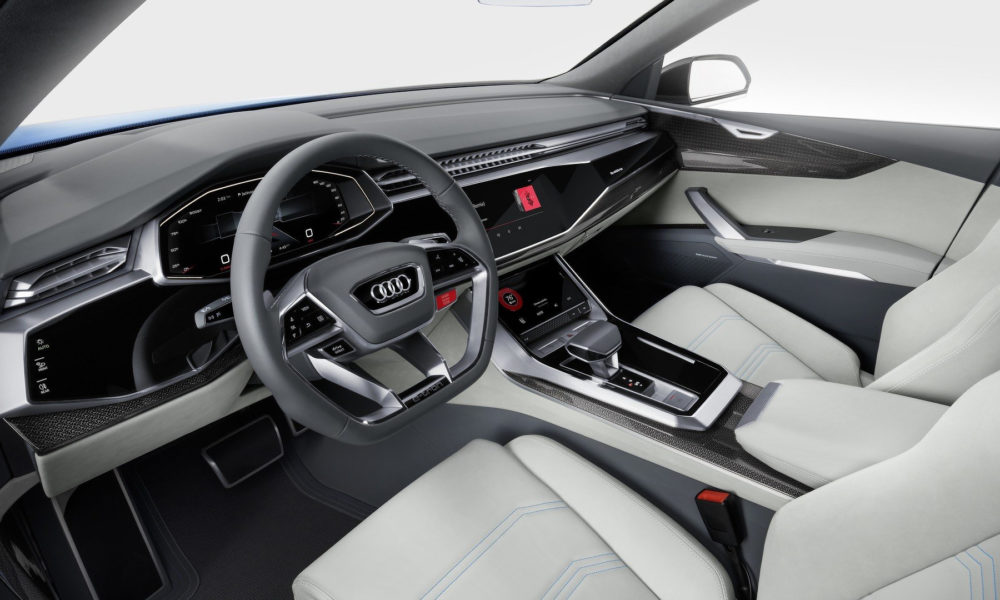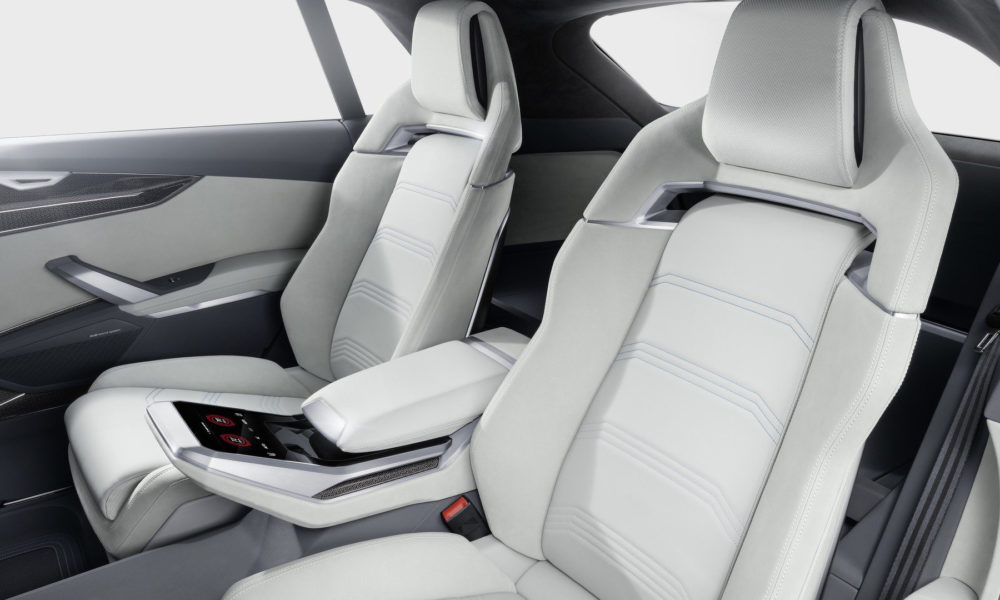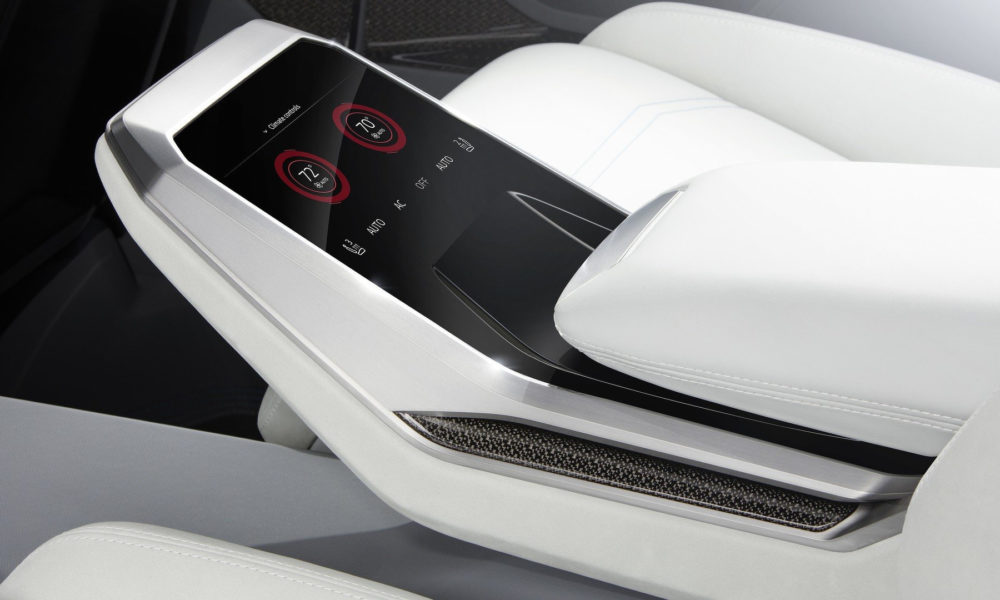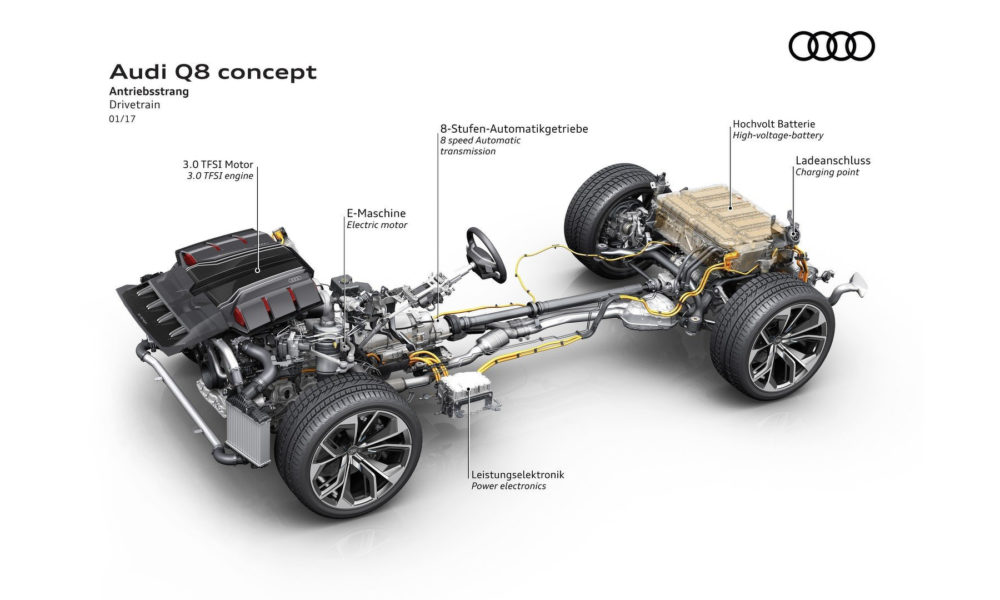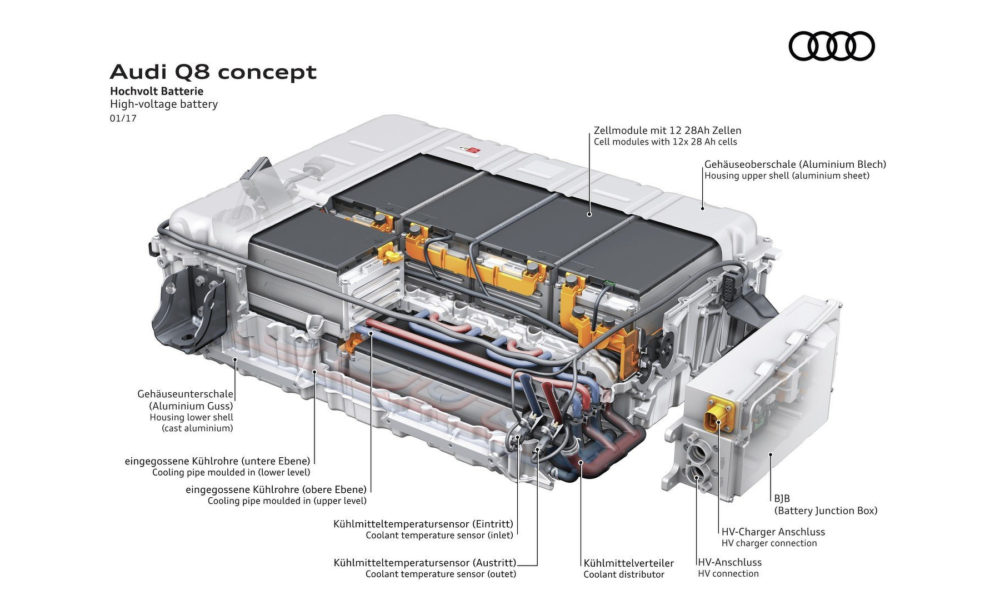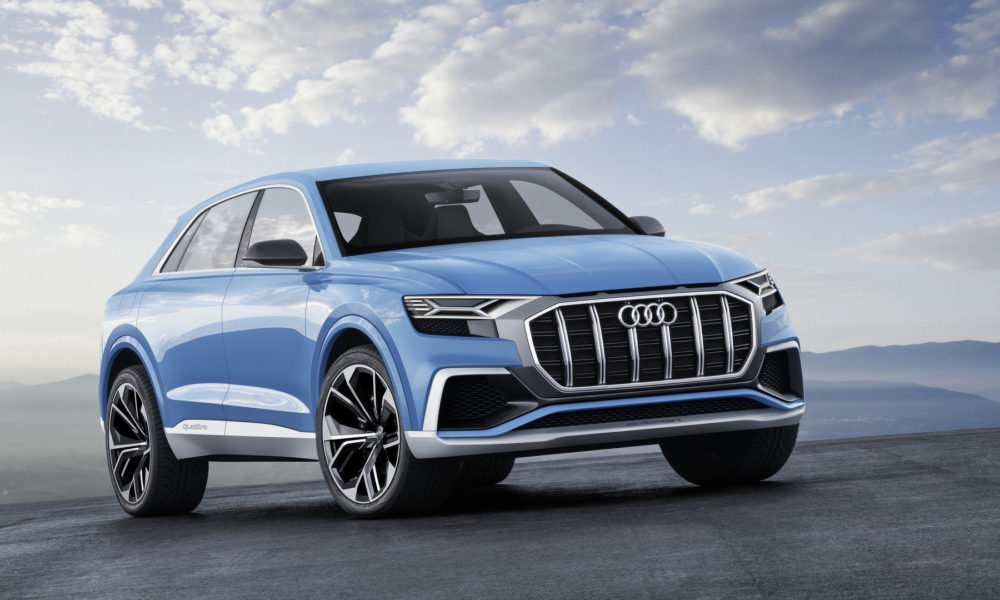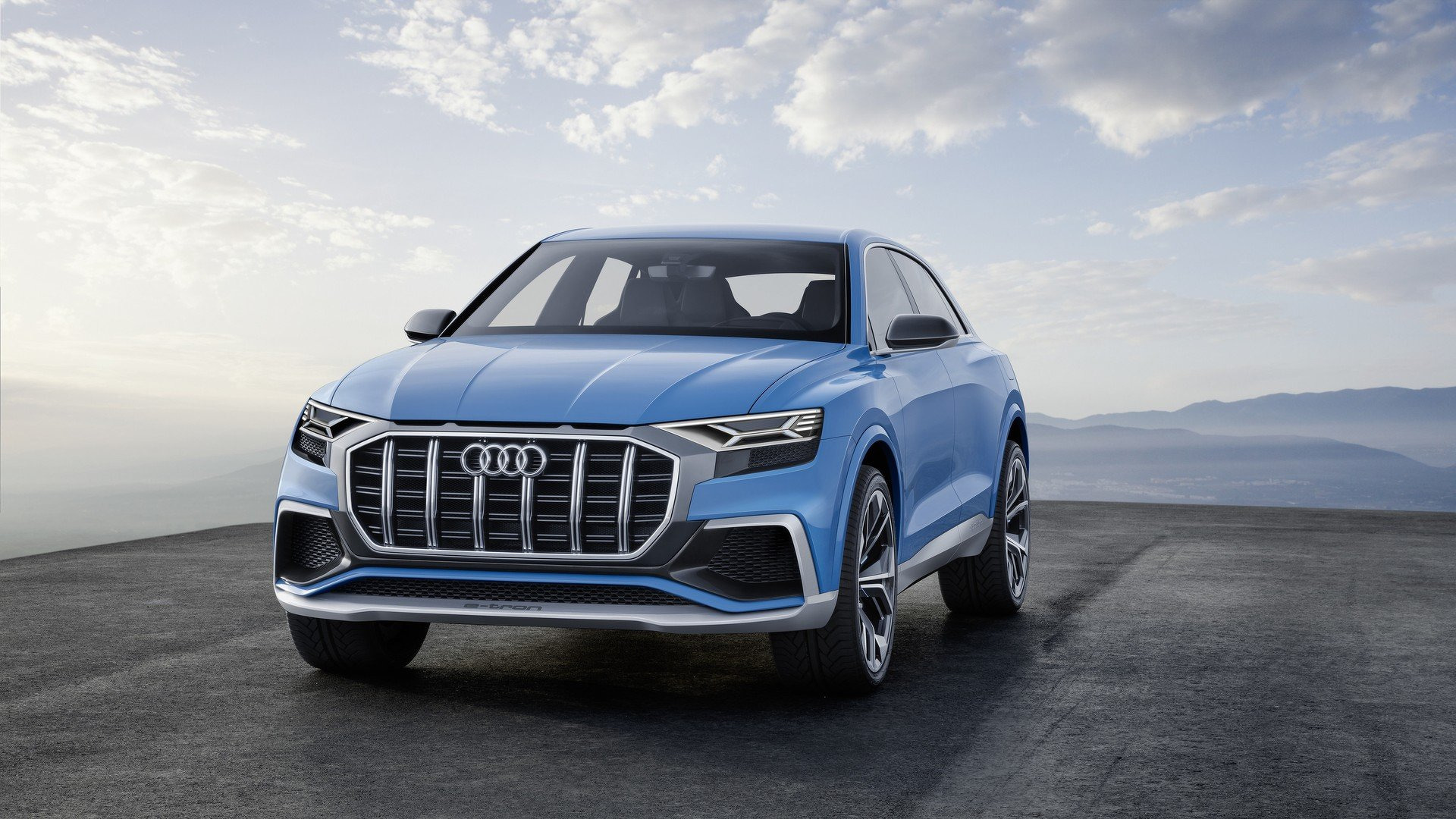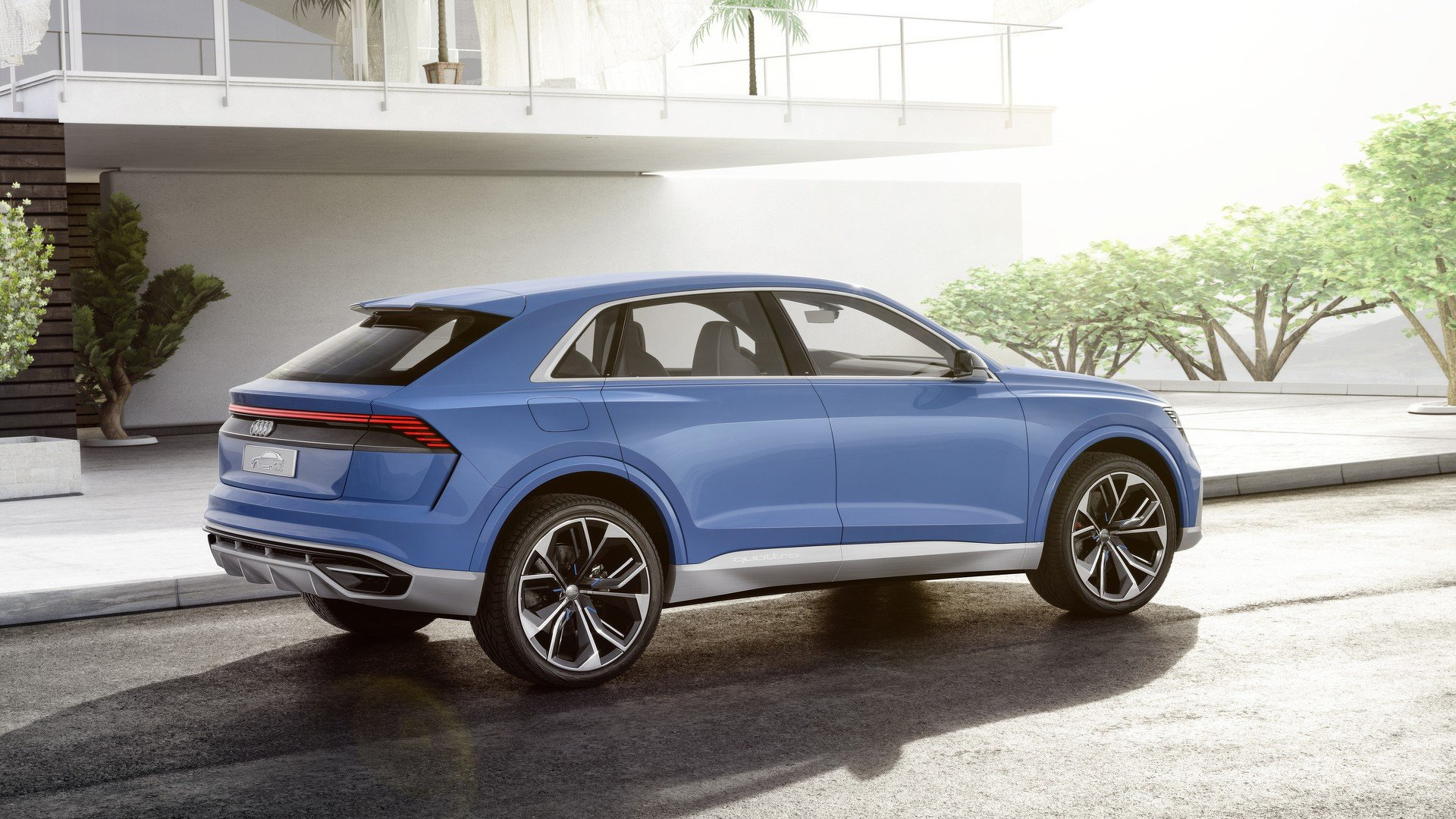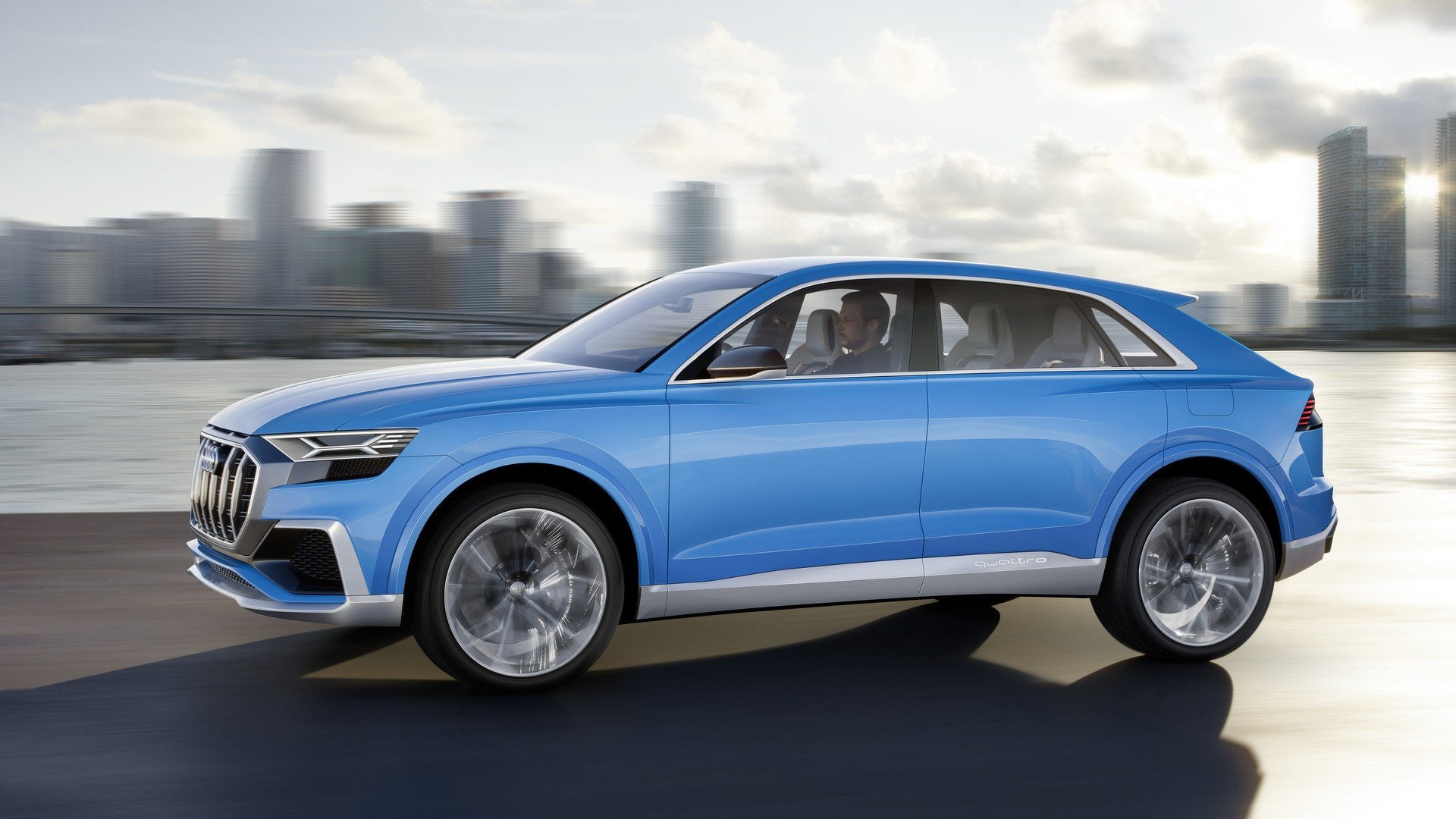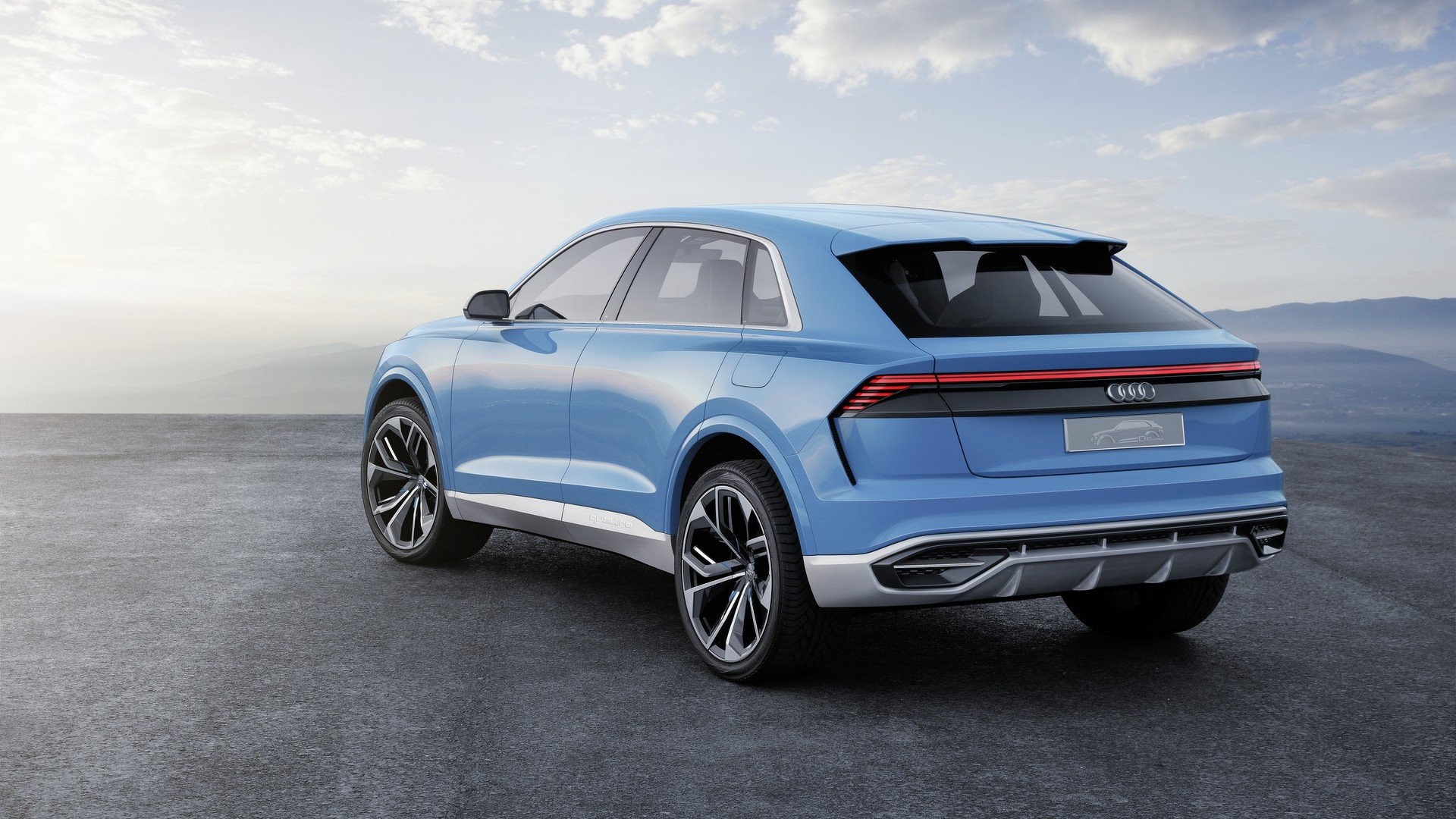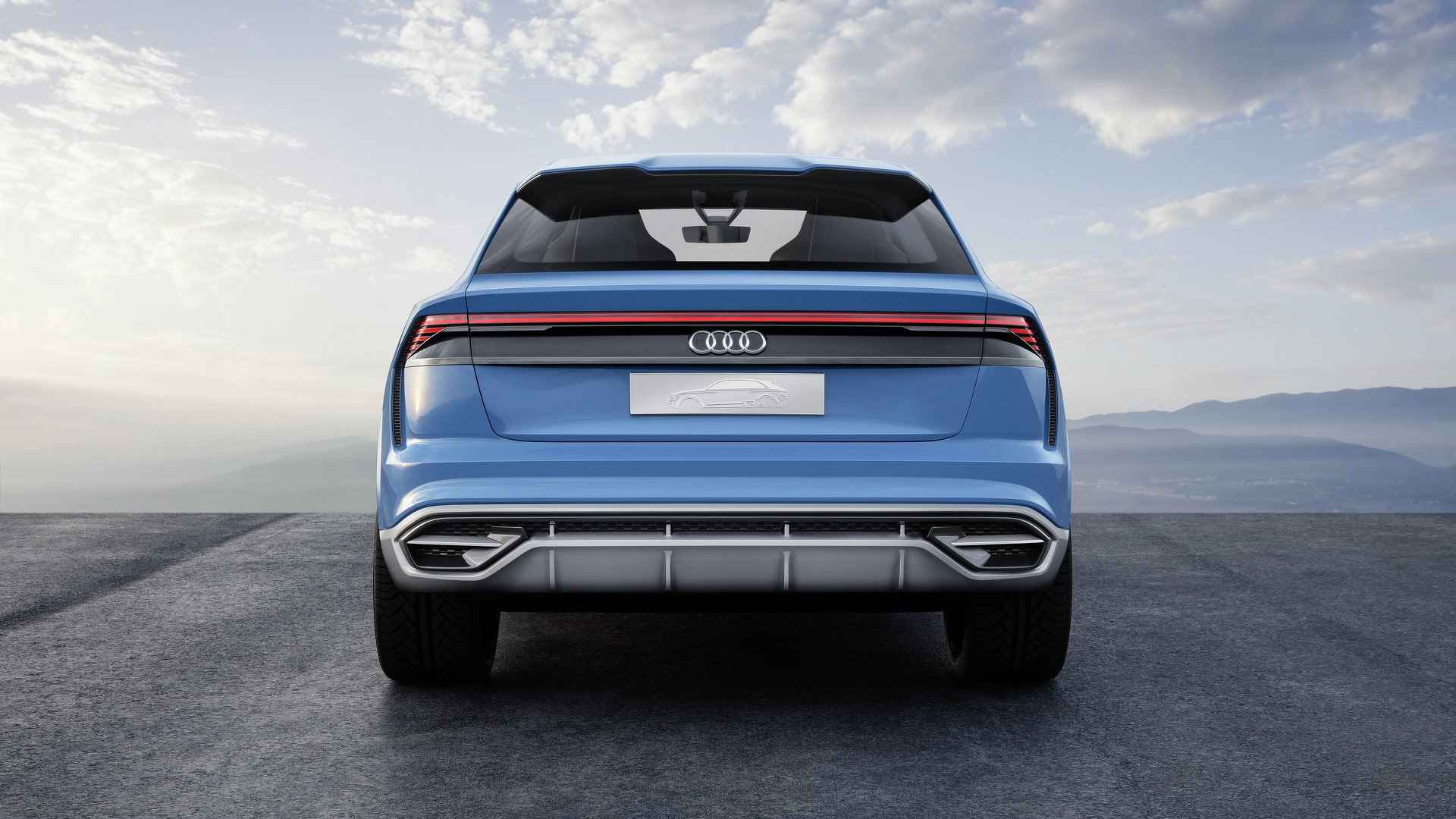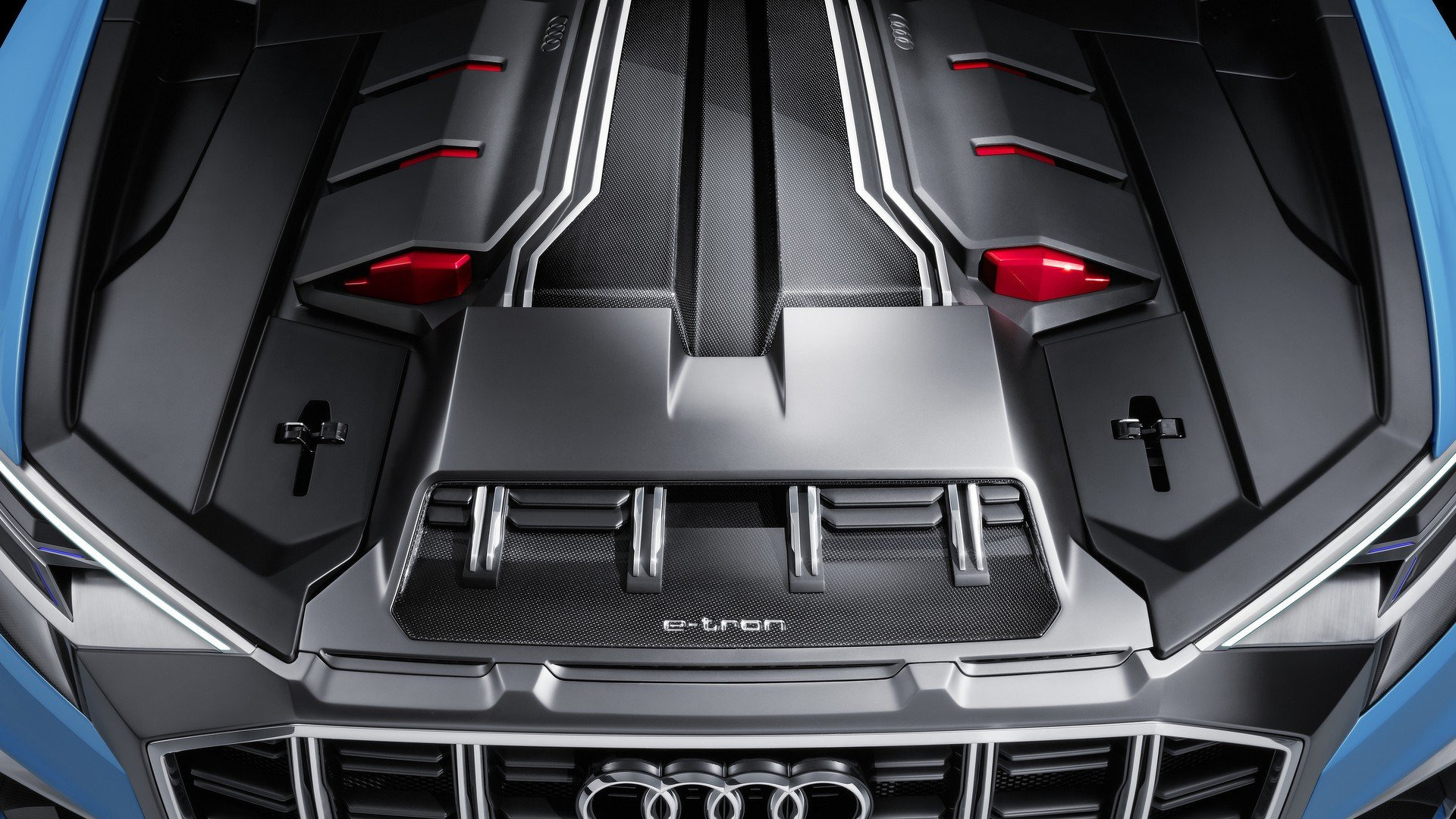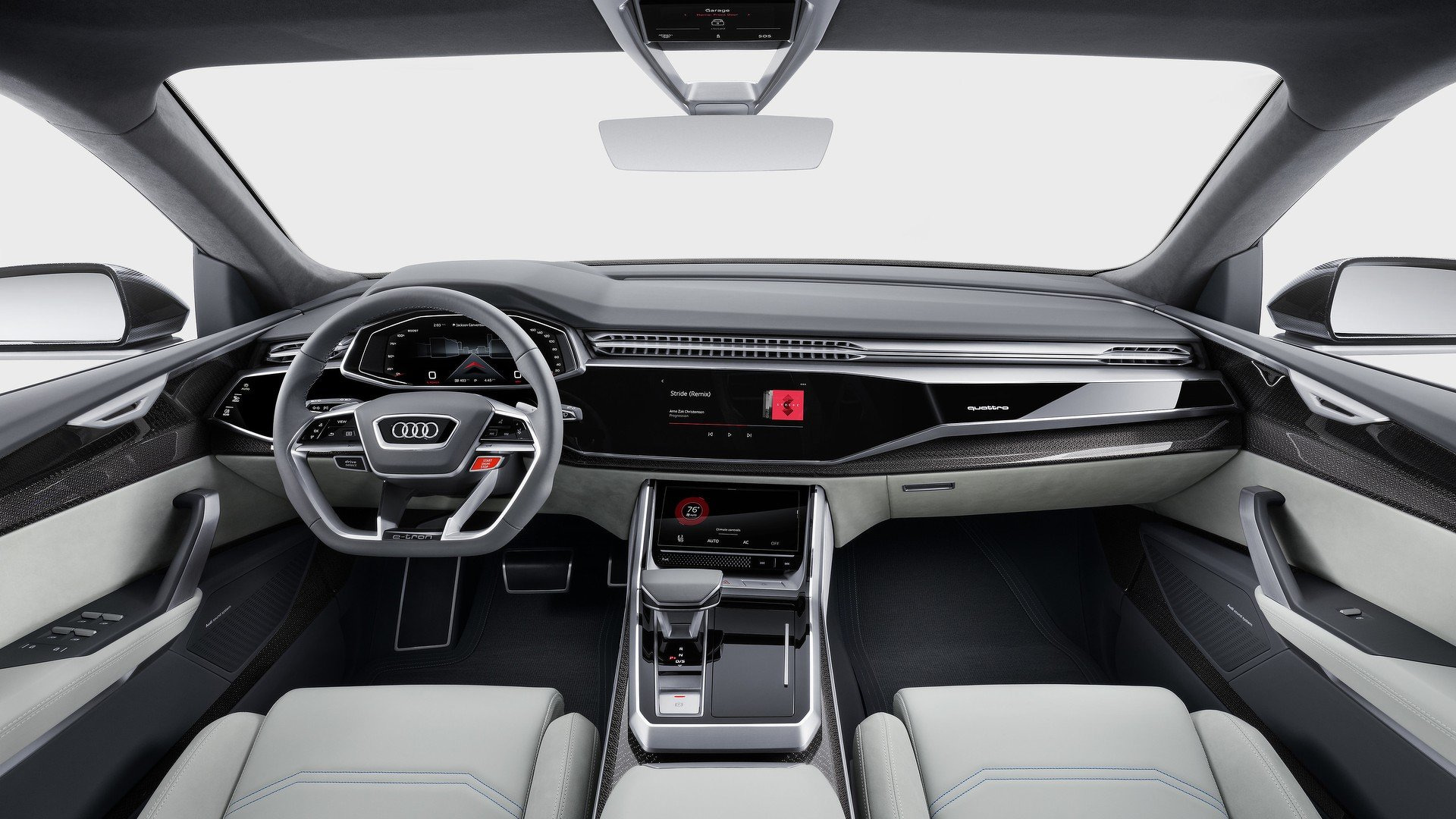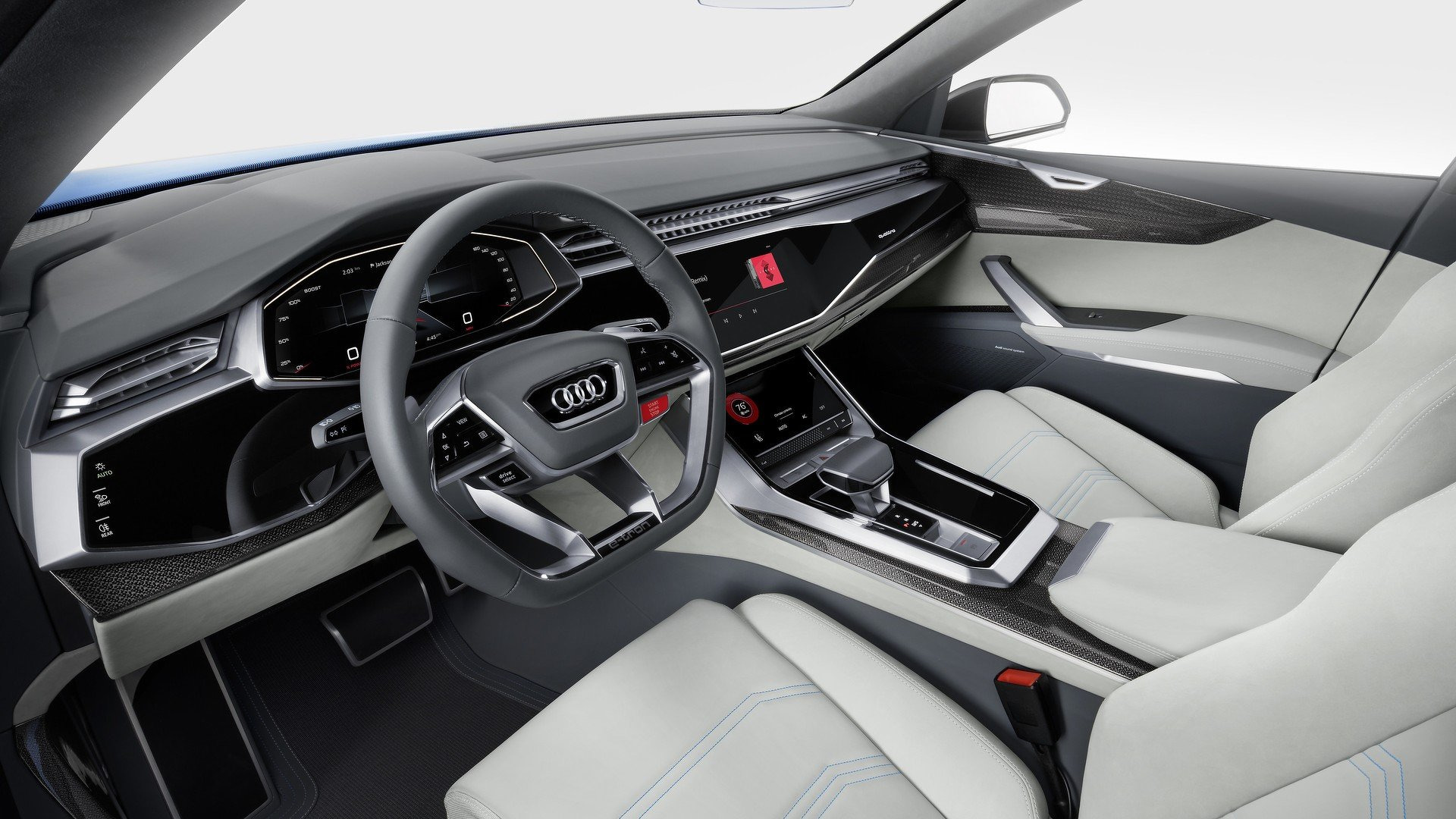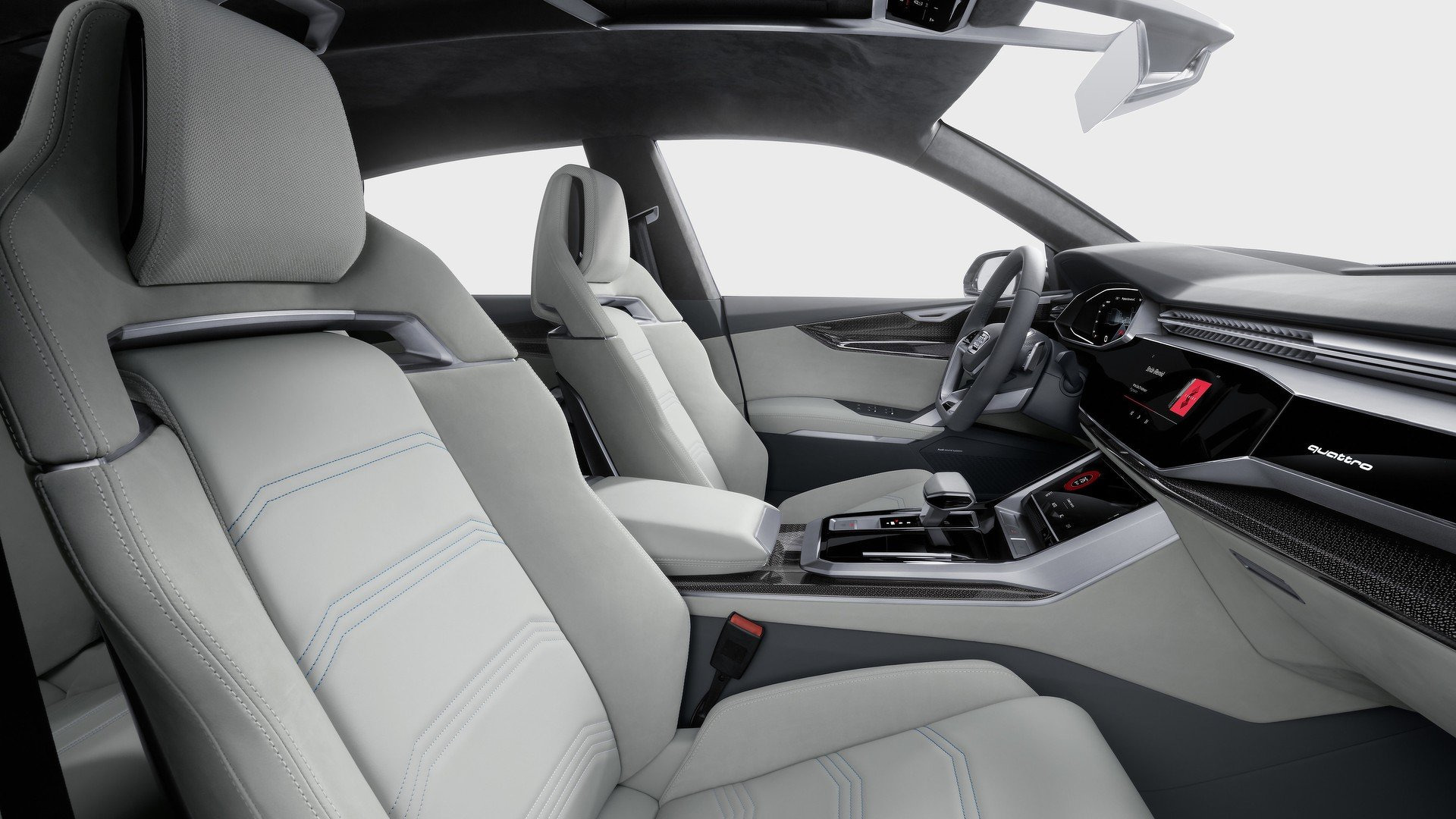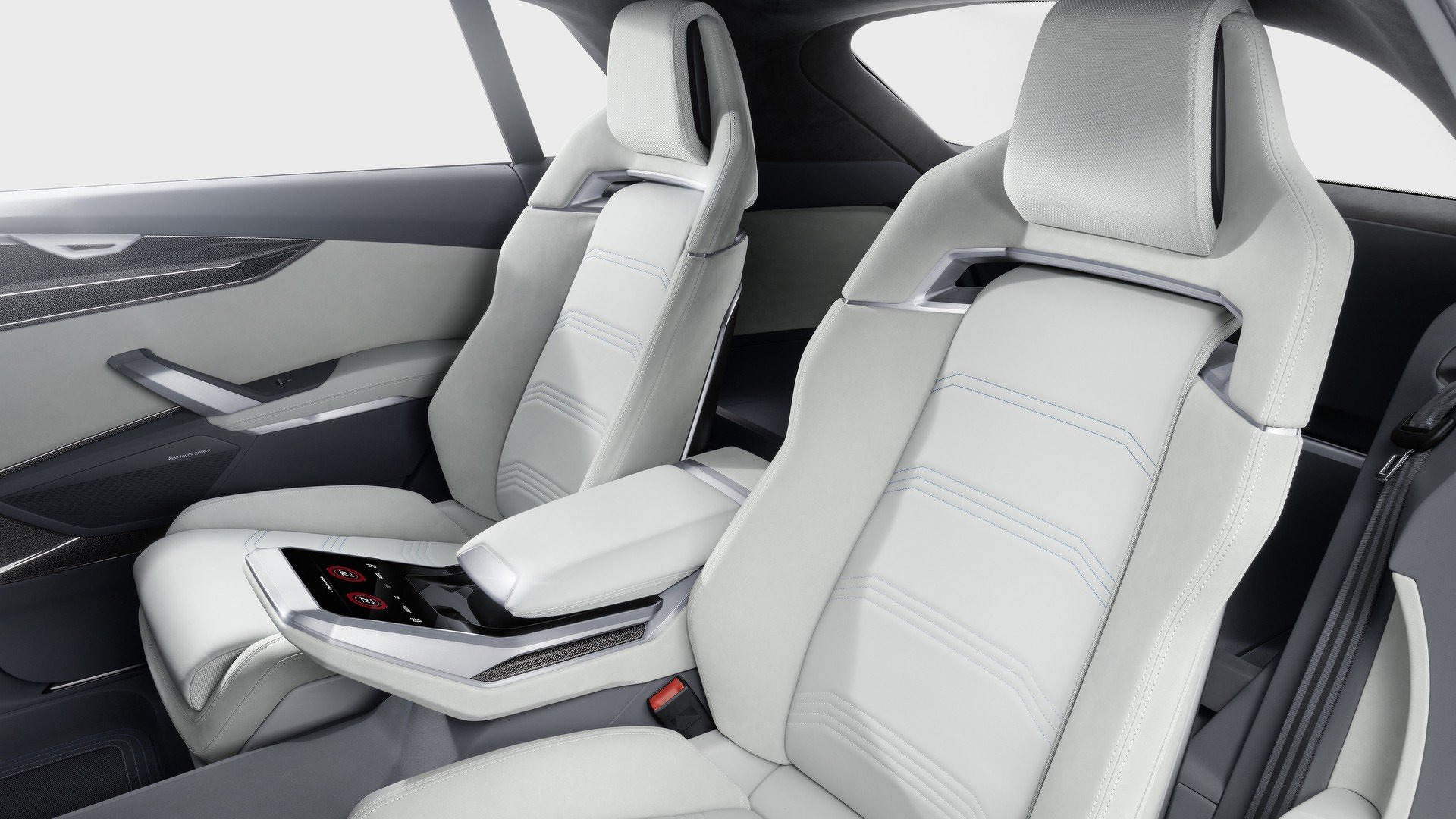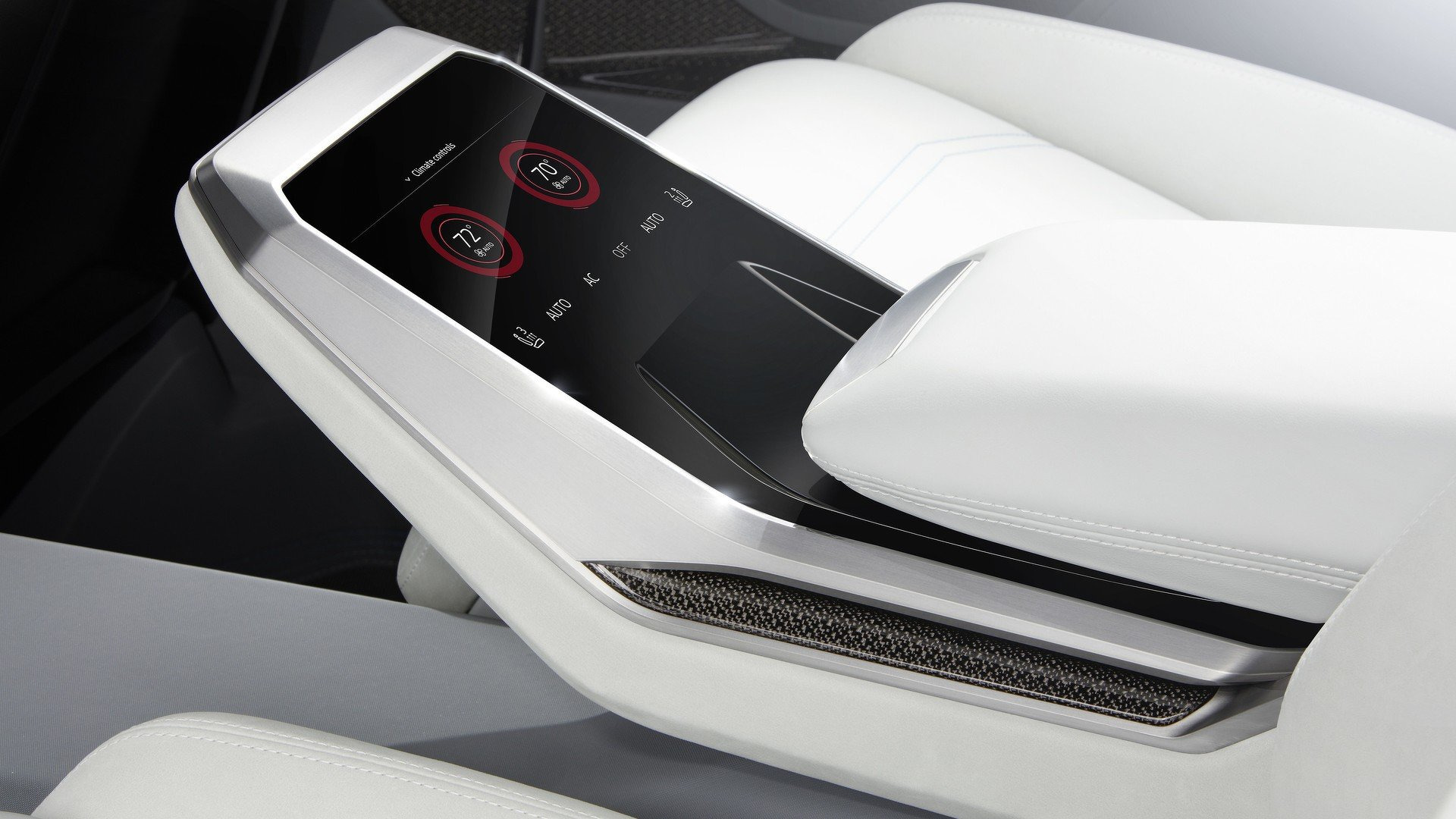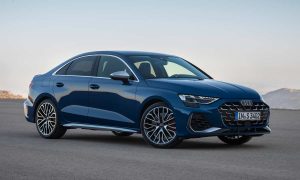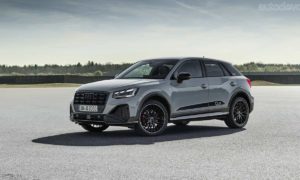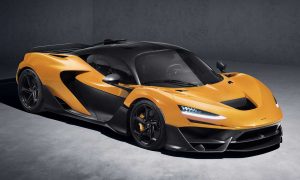Audi’s full-blown Q8 concept debuts today at 2017 North American International Auto Show in Detroit. With this model, the premium manufacturer is tapping into a new segment for the full-size class, and will make it to production in 2018.
The Q8 concept measures 5.02 meters long, 2.04 meters wide and has a wheelbase of 3.0 metres, suggesting plenty of space for passengers and luggage. Despite the sloping, coupe-like roofline, even the rear-seat passengers should have ample head and shoulder room. Height measures at 1.70 meters.
On the front, the Q8 wears an x-shaped Matrix LEDs with laser technology. Top edge of the headlamp cluster has LED light guide, that acts as a dynamic turn signals and DRLs. On the rear, there is a strip of lights extending over the entire width of the rear end. It serves as both the tail and brake light as well as the dynamic turn signals. The four outer lighting elements are set in aluminium blades and reflect the semantics of the headlights. The individual elements of the tail lights are also open, and all lighting functions are dynamic.
On the inside, the Audi Virtual Cockpit now comes with a resolution of 1920 x 720 pixels. The 12.3-inch TFT has enough space for maps, lists and additional information. The top-down map view visualizes the selected route. When zooming in, the current position and surroundings are displayed in 3D. Through the buttons on the steering wheel, the driver can switch to “performance” mode. The needles of the speedometer and powermeter now appear in a foreshortened, three-dimensional display. All other monitors in the Audi Q8 concept are touch displays.
The MMI monitor in center of the dashboard is used to control the infotainment system and for vehicle settings. A display for the climate control system is integrated into the diagonal section of the center console. If the sensors in the seat detect a front-seat passenger, the touchscreen displays their climate control settings. This function is not available when the driver is travelling alone. Another touchscreen is reserved for the lighting functions.
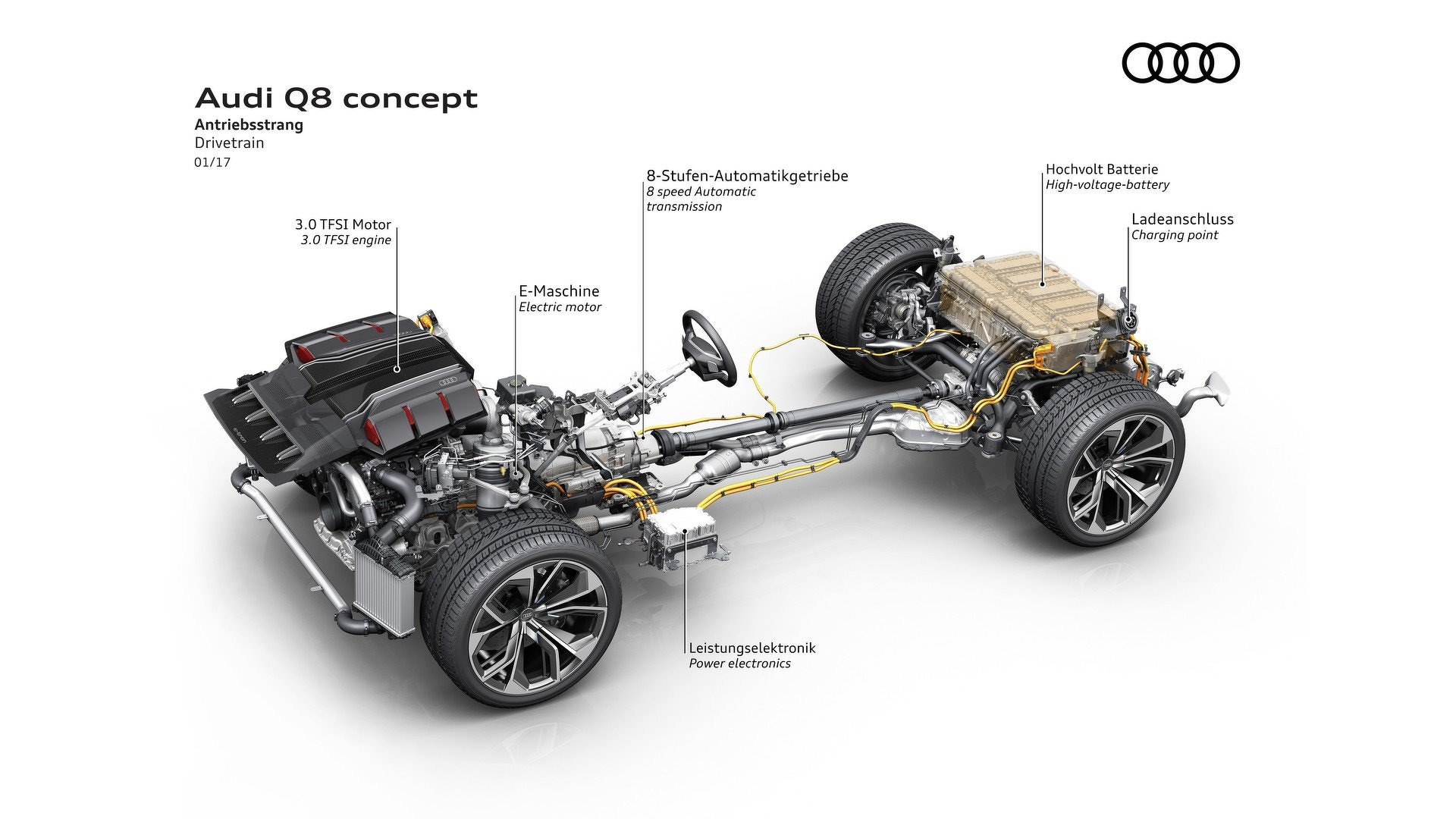
The Q8 will come as a plug-in hybrid, packing a 3.0 litre TFSI engine producing 333 hp of power and a maximum torque of 500 Nm. The electric motor on the other hand generates 100 kW (134 hp) of power and 330 Nm of torque. The system together produces 330 kW (442.5 hp) of power, and 700 Nm of torque. An 8 Speed tiptronic takes care of the transmission.
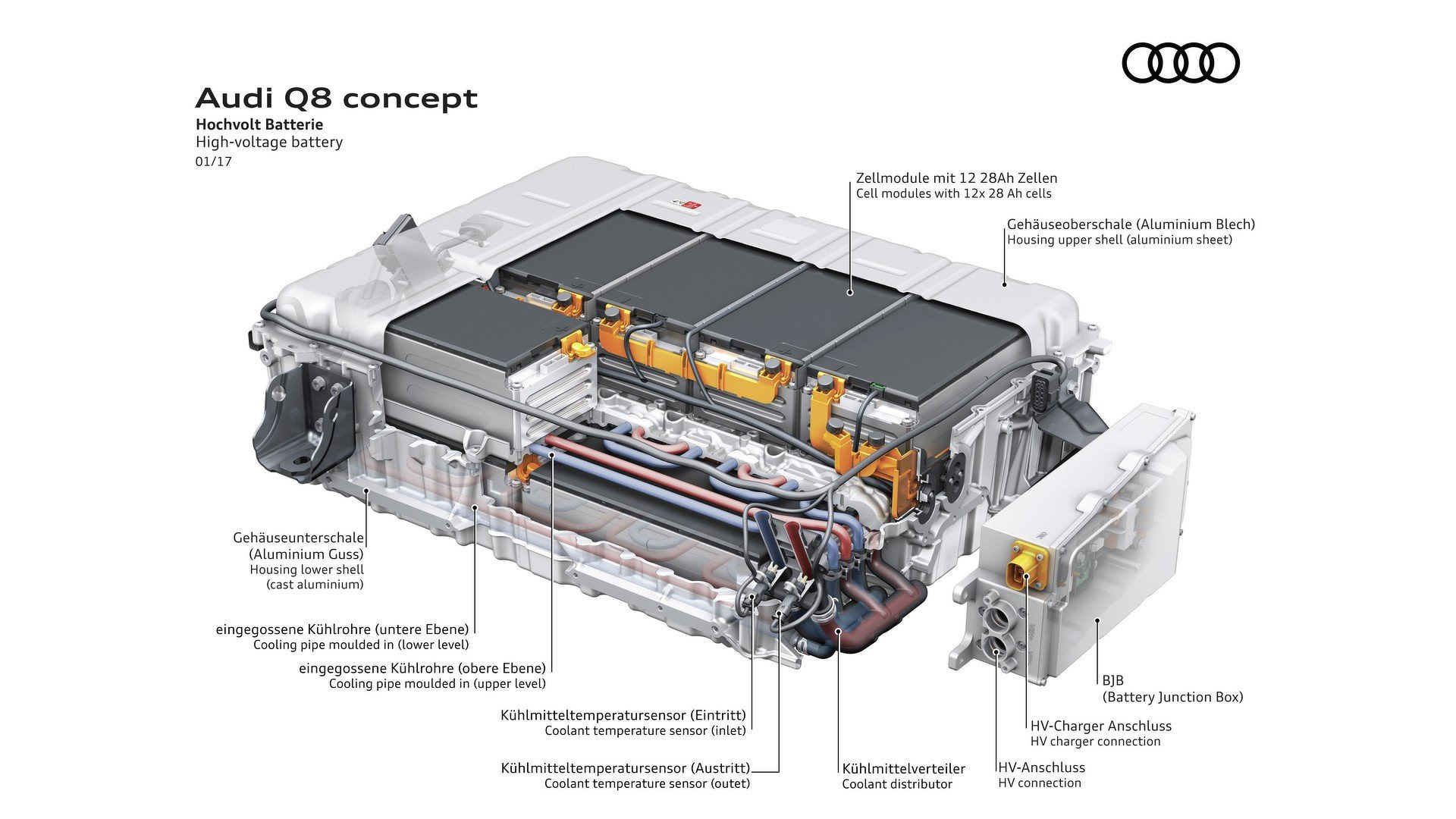
The 17.9 kWh lithium-ion battery located in the rear, enables an electric range of 60 kilometers (37.3 mi), and the total range with the TFSI engine is up to 1,000 kilometers (621.4 mi). A full charge with 7.2 kW output takes about two and a half hours. There is energy recuperation as well.
The driver controls the Audi drive select system via a prismatic satellite button on the flat-bottomed steering wheel, just like the start-stop system. There is a choice of three driving modes: “EV” mode prioritizes electric driving, while in “hybrid” mode the decision regarding the drive type is left largely to the hybrid management system. In “battery hold” mode, it saves the available electric energy for a later time.
The Q8 gets adaptive air suspension with controlled damping, which allows a wide range from cushioned cruising to firm and tight handling. In addition, it sets the ground clearance in two levels, with 90 millimeters (3.5 in) height difference, to the ideal level in each case. The SUV rides on a large large 11J x 23 wheels, wearing 305/35-series tires. Stopping power comes from 20 inch ceramic discs. Boot space is measured at 630 litres.

Leave a Reply
Note: Comments that are unrelated to the post above get automatically filtered into the trash bin.
